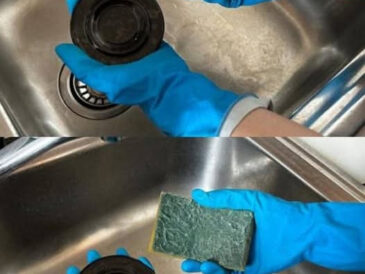Optional Additions and Variations
- Rolled in Powdered Sugar: A traditional look with extra sweetness and crackled texture.
- Topped with a Whole Almond: Press one almond into the center before baking.
- Flavored with Lemon Zest: Substitute orange zest for lemon for a brighter flavor.
- Dipped in Chocolate: Once cooled, dip half of each cookie in melted dark chocolate.
- Amaretto Liqueur: Add a teaspoon of Amaretto instead of extract for a boozy note.
Troubleshooting Tips
1. Cookies Too Flat?
- Egg whites weren’t whipped enough or the dough was too wet.
- Solution: Whip to soft peaks and measure almond flour precisely.
2. Cracks Not Forming on Top?
- Oven may be too cool.
- Try letting the dough rest for 15 minutes before baking to dry the tops slightly.
3. Cookies Too Dry?
- Overbaking is the main culprit.
- Check doneness by lightly pressing the center — it should feel soft but not wet.
4. Dough Too Sticky to Shape?
- Chill dough for 15–20 minutes.
- Use wet or oiled hands to roll the dough easily.
Storage and Shelf Life
- Room Temperature: Store in an airtight container for up to 5 days.
- Freezing: Freeze in layers with parchment between cookies. Thaw at room temperature before serving.
- Make Ahead: Dough can be prepared and refrigerated for up to 48 hours before baking.
Nutritional Overview (per cookie, approx.)
- Calories: ~100
- Fat: ~6g
- Carbohydrates: ~10g
- Protein: ~3g
- Naturally gluten-free, low in saturated fat, and can be made refined-sugar-free with alternatives like coconut sugar.
Perfect Occasions for Serving
- Holiday Baking: These cookies are a favorite on Christmas cookie trays.
- Gift Giving: Package in tins or clear bags with ribbon.
- Afternoon Coffee: Ideal with espresso or cappuccino.
- Bridal Showers or Tea Parties: Elegant yet easy to make in large batches.
Cultural and Historical Roots
The amaretti tradition dates back to the Renaissance, originating in regions like Lombardy and Sicily. The word “amaretto” means “a little bitter,” referencing the bittersweet flavor of almonds. Over time, the cookie evolved into many styles — crispy, chewy, sweetened with honey or sugar, sometimes containing apricot kernels.
Soft Amaretti are a more recent variation, prized for their tender bite. Their gluten-free nature and simple ingredients make them popular with modern bakers, especially in Mediterranean households.
Scaling the Recipe for Larger Batches
For double or triple batches:
- Use a stand mixer for whipping egg whites.
- Measure dry ingredients with a kitchen scale for accuracy.
- Bake on multiple trays or in batches to maintain even spacing and baking.
Make It Vegan or Sugar-Free
Vegan Version:
- Replace egg whites with aquafaba (liquid from canned chickpeas). Use 6 tablespoons for 2 egg whites.
- Whip until soft peaks form before folding into dry mix.
Sugar-Free Version:
- Substitute granulated sugar with a 1:1 sugar alternative like erythritol or monk fruit sweetener.
- Be aware: Some sweeteners don’t caramelize the same way, so texture may differ slightly.
Fun Decorating Ideas
- Drizzle with lemon or orange glaze (powdered sugar + citrus juice).
- Roll in crushed almonds before baking for extra crunch.
- Color the powdered sugar with beet or turmeric powder for festive flair.
Conclusion: A Cookie for All Seasons
Soft Italian almond cookies are a perfect example of elegance in simplicity. With only a handful of ingredients, they deliver a depth of flavor and texture that rivals even the most elaborate confections. Whether you’re making them for the holidays, a dinner party, or a quiet afternoon treat, these cookies offer a consistent, satisfying reward.
Mastering this recipe opens the door to countless variations and opportunities to impress guests or simply treat yourself. Once you make them, you’ll understand why they’ve remained a cherished part of Italian baking for generations.
Let the almond aroma fill your kitchen and enjoy every tender bite.




